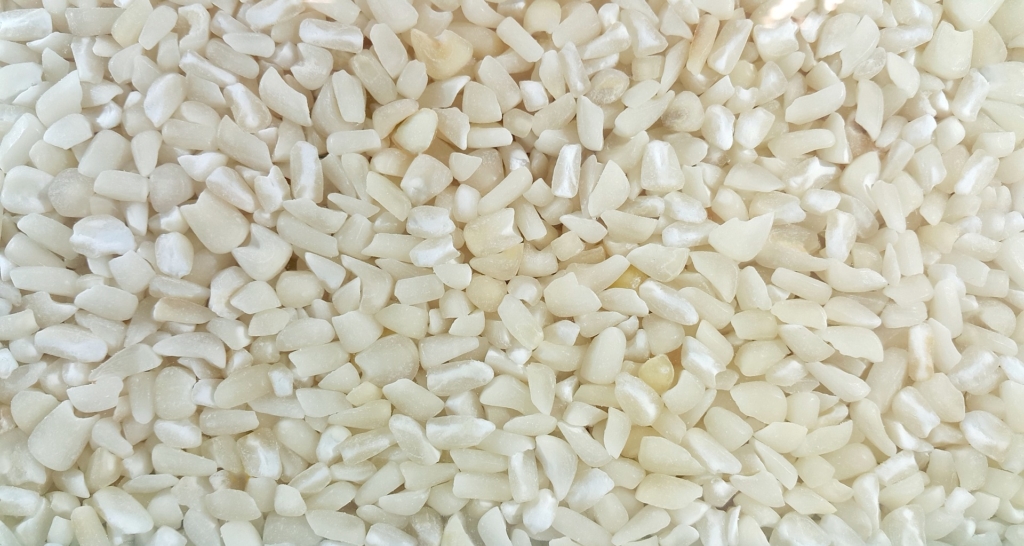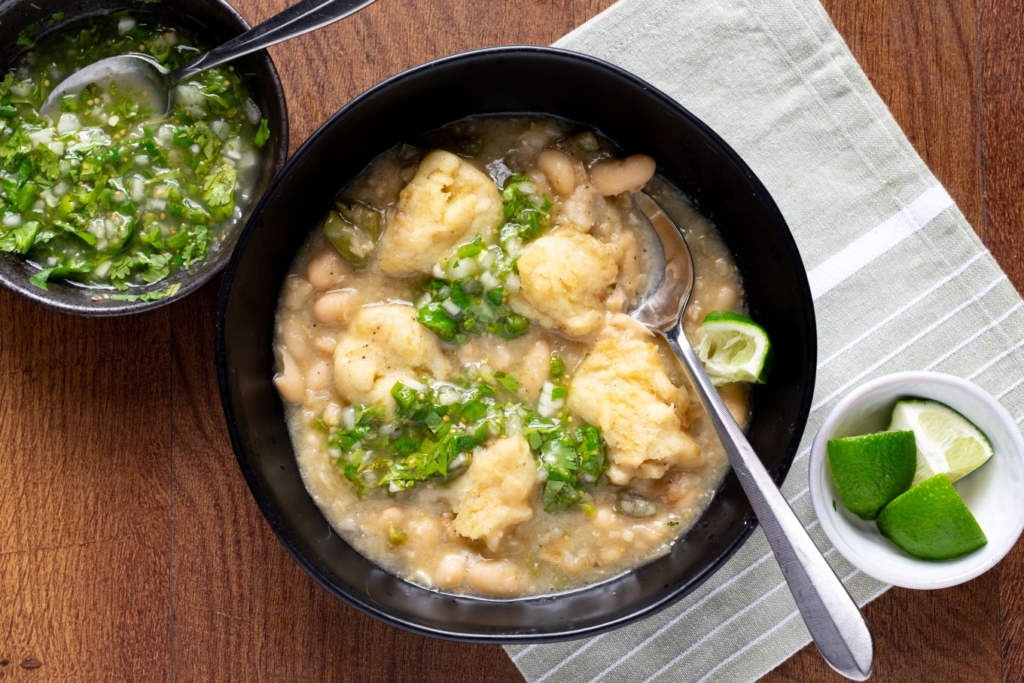It’s a beloved breakfast served with butter, syrup, or gravy. It’s a key ingredient in traditional Mexican posole. Without it, we’d have no corn tortillas–to say nothing of tortilla chips. It’s hominy. But what exactly is it, and how is it used?
What is hominy?
Hominy is corn, but not the sweet kind we eat off the cob. Like countless other products such as cornstarch, corn syrup, and cornflakes, it comes from maize (also called field corn). A treatment called nixtamalization turns maize kernels into hominy, and causes them to swell in size and become digestible. Afterwards, the hominy can be sold whole, cracked, or ground into meal.
History

Hominy has long been a source of important nutrients in the diet of native peoples across the Americas. The first evidence of nixtamalization, according to the Corvallis Gazette-Times, took place around 1500 B.C. in what is now Guatemala. Native Americans made a gift of hominy to European colonists, also sharing their cultivation and preparation processes, which involved boiling the corn in a wood-ash solution until the hulls could be easily removed by hand.
Flavor
In what might surprise no one, these corn kernels taste like corn. But snark aside, the surprise might be in the earthy and nutty flavors that add complexity to these plump, chewy kernels.
Preparation
The signature step of the nixtamalization process involves soaking or boiling corn kernels in an alkaline solution, softening their hulls to aid removal. The alkali ranges from the wood ash of yore to lime or lye (materials that seem like a dicey mix with food, though lye has long had a hand in making bagels and traditional Bavarian pretzels). A similar effect can supposedly be achieved at home with a baking-soda solution. The modern commercial process then removes the hulls using the combined action of rotating cylinders and running water. The most significant change nixtamalization produces in the corn affects the structure of the proteins and carbohydrates, which now allow ground grains to adhere upon becoming wet, turning the ground corn into dough.
Dried hominy can be prepared similarly to dried beans, meaning it should be rinsed, soaked, and then simmered. Preparing dried hominy can take up to 12 hours.
Nutrition
Hominy is a natural source of fiber, iron, and magnesium, but nixtamalization unlocks additional benefits, converting B vitamins and amino acids also present in the corn into digestible nutrients.
Uses

In the US, and especially in the Southeastern “grit belt,” hominy’s most recognizable form might be a coarsely ground version called grits. When boiled, hominy meal makes a versatile canvas that can accommodate sweet or savory flavors for any meal of the day, or any meal tomorrow, for that matter, as leftovers are often shaped into cakes and fried.
Ground hominy flour is also called masa, which is used to prepare tortillas, tamales, arepas, empanadas, pupusas, and a creamy Mexican beverage called atole. The kernels are a key ingredient in Mexican stews like posole and menudo. Visit The Spruce for a primer on maize in Mexican cuisine.
Hominy and masa cook perfectly in Suvie, too. Check out our recipes for Carnitas-Tamale Shepherd’s Pie, Cod Pozole, Braised Pork with Tamale, White Bean Chili with Masa Dumplings, and Chipotle Beef with Masa Dumplings.
How to Find It
Canned or dried hominy, which can be white or yellow, is widely sold in supermarkets and Latin American grocers. Dried kernels might be sold whole, cracked (also called maíz trillado), or ground into grits. Many cooks, including those at Bon Appetit, prefer canned hominy, which saves time and tastes comparable to the home-cooked version.
Feature Image: Glane23 – Own work (CC BY-SA 3.0)



